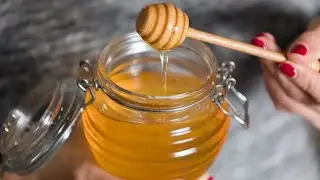What Is Old Bay Seasoning, Anyway?
#bigquestions #oldbayseasoning
Real Marylanders don’t just season their crabs with Old Bay. The orange spice blend is all over their popcorn, around the rim of every quality Bloody Mary, and occasionally mixed into their ice cream. Some devotees even carry a container in their purses.
In other words, Old Bay Seasoning is a major point of pride for those who live in the Old Line State. But where did it come from—and what spices are actually in it?
The Origins of Old Bay
map of maryland
The Chesapeake Bay separates mainland Maryland from the Eastern Shore. / artbyjulie/DigitalVision Vectors/Getty Images
Old Bay’s origin story begins in Germany during the 1930s, when the rise of Nazism prompted Jewish spice merchant Gustav Brunn to obtain a visa so he, his wife Bianca, and their two young children could immigrate to the U.S.
Leaving Germany wasn’t easy. On the night of November 9, 1938, the Nazis launched what’s known as Kristallnacht, a series of brutal pogroms in which they destroyed Jewish homes and establishments across Germany, Austria, and other German-occupied territory. Brunn was among some 30,000 men that Nazis arrested and imprisoned in concentration camps; he spent two weeks in Buchenwald before his family was able to bail him out—at great cost—and they sailed to America days later.
After alighting in Baltimore, Maryland, where Brunn’s uncle lived, Brunn first found work at a sausage factory and then, eventually, at spice manufacturer McCormick & Company. The gig didn’t last: Brunn was let go within just a few days, which he attributed in a 1980 interview to his less-than-stellar English language skills (though Brunn’s son Ralph recalled that his father was fired for being Jewish).
Armed with a small spice mill he’d carted all the way from Germany, Brunn struck out on his own and founded the Baltimore Spice Company in a rented second-floor space right across from a fish market. As his business started to flourish, Brunn wondered how he could service the seafood merchants, who all “had their own secret recipes” for seafood spice blends. “I thought I could make a better seasoning for the seafood people,” Brunn said. To thwart copycats, he made sure to populate his recipe with surprising ingredients.
“To his amazement, those minor things he put in there—the most unlikely things, including cinnamon and nutmeg and cloves and all kinds of stuff that had nothing to do with crabs at all—gave a background bouquet that he couldn’t have anticipated,” Ralph Brunn told Jewish Times in 2018. “Old Bay, per se, was almost an accident.”
An advertising pal of Brunn’s came up with the name—a nod to the Old Bay Line, a Chesapeake Bay–based steamship line. Old Bay Seasoning wasn’t an immediate success among Brunn’s target consumers, most of whom were too attached to their own spice blends to shell out for something new. But once they realized one wholesaler’s Old Bay–covered crabs were selling better than ever before, they quickly changed their tune.







![(EN)[Take care of me!] Episode 60](https://images.mixrolikus.cc/video/Nptbm-XfDyU)























